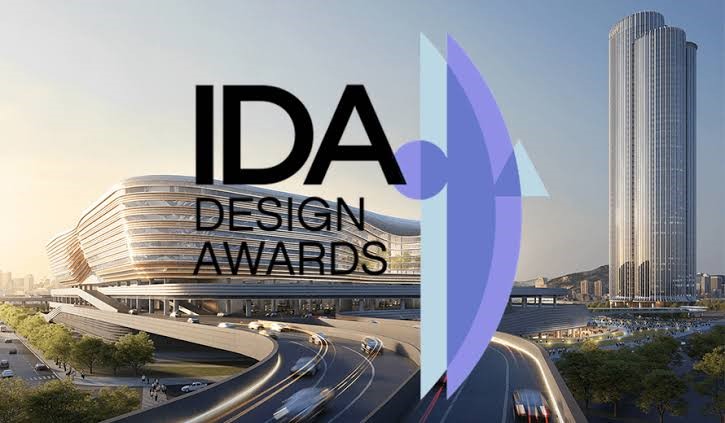
https://www.infodesigners.eu/contests/ida-international-design-awards-2022/8275
Design is a ubiquitous term used to describe a wide range of human activities. Whether it is the creation of a house or the making of microchips to controversial terms like designer babies (playing God literally), the word design seems to be present in all human activities that lead to a new (and better) creation that may or may not exist before. However, the knowledge and skills required to design anything depends entirely upon the body of knowledge specific to a particular discipline or enterprise. So no matter how knowledgeable and experienced a person is in designing 4 stroke engines, his or her knowledge may be inadequate in designing, say a blockbuster movie poster for film theatres.
Over the last few decades Industrial designers have distinguished themselves from other creators, due to the want of an identity, as creators who create with human problems and needs in mind rather than exploration of technology or any other motive.
People can create things with all kinds of intentions in mind. They can create with an intent:
- to express their inner feelings ( art )
- to test new methods, materials and techniques ( Technology)
- to learn about laws of nature ( science)
- to express the will of God ( religion)
- to sell as many commodity as possible ( business )
or they can create to solve human problems and fulfil human needs(Design).

apple.com/newsroom/2021
But again human problems require intervention of specialised fields,
for example, health related problems require a body of knowledge from the medical discipline with its long history and current state of knowledge. An industrial designer cannot directly intervene to solve human health problems.
So defining design as a human problem solving activity itself does not lead us to any distinct clarity about the nature of the industrial design profession.
This problem of vagueness in defining design as a distinct profession has been tackled well by a newcomer in the field of design i.e Human computer interaction(HCI), which has really narrowed down the scope of design to problems that arise due to interaction of a human being with a machine, like a computer. It was recognised by designers in the field of HCI that a unique set of problems arise when humans interact with an electronic machine. The success of modern social media and other smart technology is largely due to HCI professionals who laid the foundation of what we now know as User experience design where comfort and frustration of individuals known as users was valued to be the topmost priority in solving problems. This was not the case pre-HCI era where business and technology needs superseded customer or user needs. Apple was one of the first enterprises that pioneered this expertise of HCI and transformed it into a Design Philosophy that spread outside the boundaries of HCI to embrace the whole business. The success of technology business that kept user needs as prime motive in mind led to formation of Design thinking as a formal process of design that led to solutions that championed solving user problems in using technology. Similar academic processes emerged in business like the value proposition model which guaranteed greater chances of business success if user pains were clearly identified and removed through novel products or services.
However, the rise of User Centred Design has created a deep chasm within the traditional designers in pre-HCI era and those who came riding on the success of the internet and other interactive technologies.
This divide within the design industry is so deep that the two worlds do not seem to understand the other side and has created a great instability within the discipline. This division is further exacerbated by a rising number of designers from HCI background gaining PHD while those from Pre hci era struggling to find PhD guides in fields like filmmaking or graphic design. This can be verified by data on the number of phd topics in HCI related versus other traditional design fields.
The war between the two worlds is based on a simple line of argument:
For traditional designers, original, creative and meaningful Design cannot be the outcome of methodical processes used in User centred design ( inspired from HCI).
For designers of the internet era, useful design is not possible if we rely entirely on the intuitive faculties of expert designers unless the user problems are systematically analysed.
In short, The traditional designer is obsessed with novelty and the modern designer is obsessed with usefulness.
Some of the modern designers who recognise the other side of design sometimes confusingly use the term design for Delight for novelty. But traditional design had another dimension of deeper “Meaningfulness” of design rather than the short term “delight” of senses used by modern internet era designers.
A more moderate approach to design would be an amalgamation of traditional meaningful design and the modern user centred design.
This article intends to present a 4th dimension of design never discussed before. Any design makes human activity easy to perform, meaningful to perform and inspiring to perform.
The easy to perform part, design shares with technology. But meaningful and inspiring to perform are purely human dimensions that needs more than analysis of physical task performance.
It requires understanding of cognitive, social and emotional aspect of individuals.
Consider the human activity of giving and receiving awards. An award is a token of appreciation for doing good work. Owning a Good design becomes a kind of reward for the owner.
A good design is also valuable and in order to own it, one has to expend a considerable amount of energy in terms of money or other forms of hard work or sacrifice.
Good design inspires the user to do good work in order to own it, to possess it.

https://www.sony.com/en/SonyInfo/design/news/awards/if_design_2021.html
The designer who creates an artefact or service as a reward, knows that he or she has to produce the best in that class.
For example, a branded Design is eagerly awaited by the audiences for a new release like the new phone model. People save money throughout the year in order to buy the new phone around the launch date.
A design as an award not only fulfils a useful function, but is so good in that category that it inspires people to work hard in order to own it. A good design gives fulfilment beyond mere usefulness to the extent that the owner of it feels rewarded for their hard work.
Good design not only attempts to be useful, but also the best in its class in a particular category. Such a design becomes a reward in itself for the owner who has the knack of the quality in that class of things.
In today’s world any design which does not aim to be the best in its class, will find it difficult to even survive. Survival will be ensured only if being the best is the first goal to the extent that the customer of the design feels a sense of reward after owning that product or service.
By Dr Sachin Datt (Asst. Prof., Head of Communication Design)
